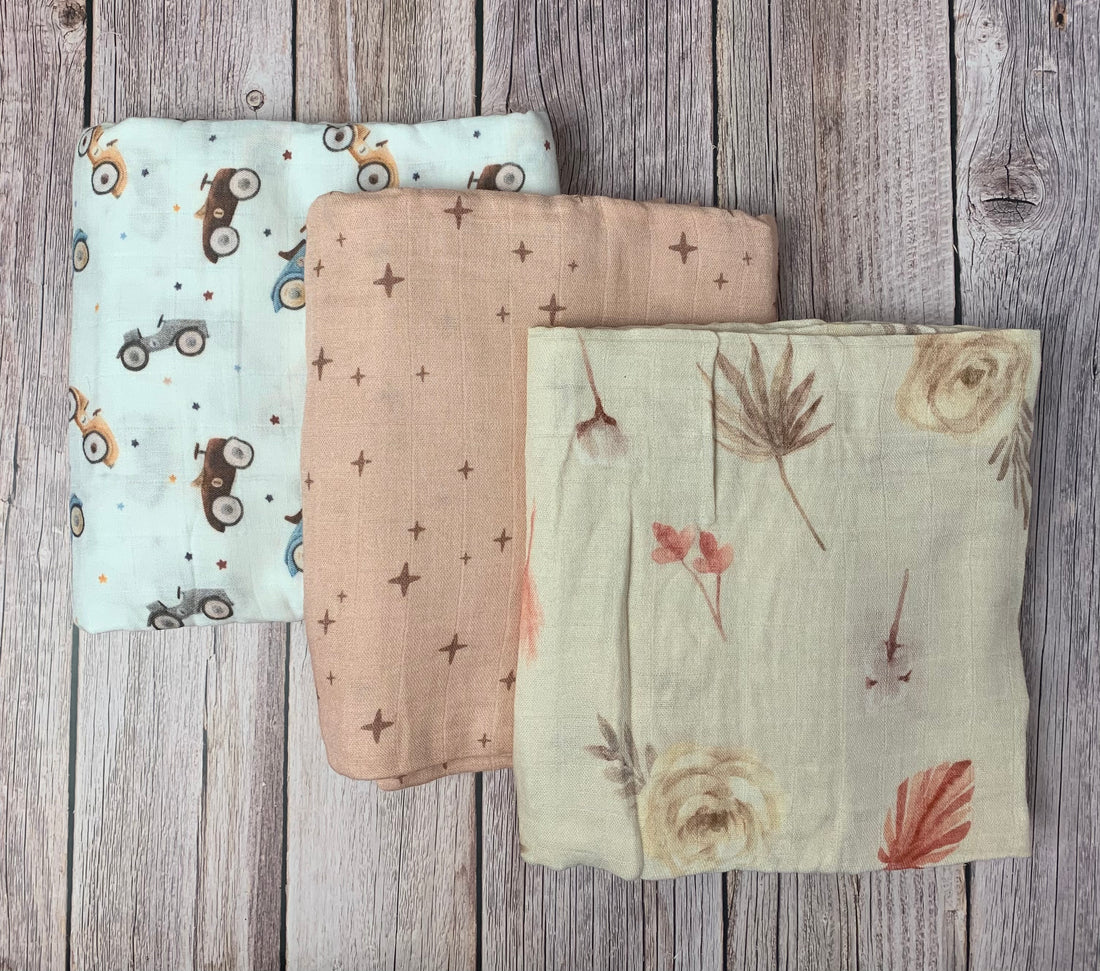Almost every baby store or online baby boutique carries swaddling blankets or
swaddling gowns. These swaddles come in adorable patterns and the blankets
have lots of uses and are a great addition to any diaper bag. They can be used as a barrier between the ground or other surface such as a changing station that you might lay your baby on. They can be used as a nursing cover, or thrown over a baby carrier for privacy. The main purpose of a swaddle however, is to aide in providing comfort to your new little one.

Swaddling is not a new term or a new practice. In fact, it’s been around for thousands of years! Swaddling simple means wrapping your baby snugly in a blanket to limit free movement. This practice imitates the safety and security of the womb. It is also believed by some that when this is done correctly, swaddling
can help to reduce the incidence of SIDS (sudden infant death syndrome) in
babies. If fact, if you had your baby in a hospital or birthing facility, you probably noticed that the medical staff would wrap your little one snugly in a lightweight blanket. Be sure to talk to your pediatrician about proper swaddling techniques and their advice regarding safe sleep; and remember the ABC’s of safe sleep recommended by the American Academy of Pediatrics. They are A: Alone, without other people, objects or extra blankets. B: Backs, babies should sleep on their backs. C: Crib, babies should sleep in a crib or other safe, approved sleep surface, not swings or car seats. Swaddling seems to have increased in popularity in recent years for several reasons, an important one being that swaddled babies tend to sleep longer. Infants are born with several instinctive reflexes, one of them being the startle reflex. Although swaddling should not be so tight as to eliminate all free movement, it should be snug enough to curb the startle reflex that is often the culprit in waking a peacefully sleeping baby. We all know that the more sleep a baby gets, the more sleep the parents will get! A crying baby can also be soothed and comforted by being swaddled. Dr. Harvey Karp, a pediatrician, wrote a book called “The Happiest Baby on the Block”. He refers to the first three months of an infant’s life outside the womb as the fourth trimester. Practices, such as swaddling, that imitate the warmth, safety and security of the womb are beneficial in soothing and calming an upset, crying little one. It is also believed that swaddling can have a positive effect on colicky babies. Colic can be one of the most challenging maladies that an infant has. Colic is basically an upset tummy that is difficult to relieve and can cause a baby to cry for hours. It is thought that the snugness of the swaddle puts light pressure on the tummy, helping to alleviate some of the pain and discomfort caused by colic. There are some things to watch for when swaddling your new little one. Swaddling properly should not be so tight that it restricts breathing, nor too loose that the swaddle might unravel and become a hazard. Make sure that hips and legs can still move freely and that you can fit at least two fingers between the babies chest and the swaddle. Swaddling a baby is designed to help them to sleep on their back, the position believed to be the safest and most recommended by doctors. This practice should be discontinued when your baby shows signs of trying to roll over. Babies as young as 2 months have been known to begin rolling over so watch carefully. New babies need some help in temperature regulation. Swaddling can help to do that, but be careful not to overheat your little one. Signs of overheating include rapid breathing, damp hair, flushed complexion and even heat rash. Using a lightweight cotton, or muslin blanket can help your little one stay comfortable while their little bodies figure out temperature control. And of course, you do not want to swaddle your baby continually. Your little one needs some time to stretch and exercise their arms and legs. Watching a happy baby squeal as they kick and wave is guaranteed to put a smile on your face!
Disclaimer: This information is not intended to take the place of your medical professional’s advice and recommendations. Always consult your doctor or pediatrician with questions or concerns regarding your baby.
Sources:
https://depts.washington.edu/nwbfch/safe-swaddling
https://livingtextiles.com/blogs/the-living-family/6-reasons-to-swaddle-your-
newborn-baby
https://www.parents.com/parenting/takeaways-from-dr-harvey-karp-happiest-
baby-on-the-block/
https://www.nbc29.com/2022/06/24/american-academy-pediatrics-updates-safe-
sleep-guidelines-babies/
